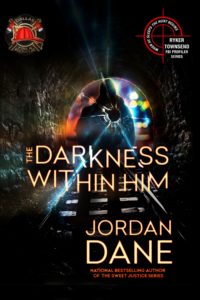
All writing is a campaign against cliche. — Martin Amis
By PJ Parrish
This must be the week for catching up on our First Page backlog. Because here is another entry from one of our faithful contributors. This one is titled OTTER ROCK and appears to be a village mystery (though set in Alaska) in the grand tradition of PD James. In fact, it reminds me of the James novel Unnatural Causes in which Adam Dagliesh deals with a body in a boat on a windswept deserted shore. (More on that later) Thanks, dear anon-author, for participating.
Also, I am adding a second entry, KEEP IT SAFE, after this one. It is a longer version of an entry I critiqued a couple weeks ago. Click here to see it. I lamented that the author should have included more sample and he/she resubmitted, so here is a longer rewritten version. This second sample deserves a second look because it shows the value of good rewriting.
OTTER ROCK
Prologue
No one saw the paint-chipped, wood dory drifting out to sea. They were intent on what the ocean placed in their net.
The old fisherman hobbled along on the charcoal sand beach toward his three adult sons. They waited patiently for him to help them pick salmon from the gill net they had just hauled from the sea, on the east side of Cook Inlet, Alaska. The old man spilled his coffee when he tripped on a rock, disguised by wet, grey mud and volcanic grit. He cussed, turned around, and ambled back for a refill, when urgent shouting diverted his attention.
One of the sons motioned him over and pointed at the tide line. The old man forgot the coffee. He gimped toward them, as they stood grouped around the tangled net on the beach. Their two-hundred-foot, monofilament net lay partially in the water, the other half clumped around something at the low tide line. The tide ebbed, leaving the beach fresh and clean.
As the old man approached, one of his sons moved to meet him.
“Dad, we have a body in the net.”
The old man stepped over to scrutinize the snarled remains. The small body curled in a fetal position, as if asleep in a womb. Layers of moss-covered nylon obscured the face, and he was thankful for it. He inspected a small, bloated foot, then noticed a pink Hello Kitty image on an ocean-stained tee shirt. Sun glinted something poking through strands of tangled hair and citrine seaweed. An earring.
“Dear God. Son, call the troopers,” said the old man, stepping back. His son retrieved a cell phone from his jacket and called 911.
____________________________________
Well, this one’s a little short as well, but we have enough to go on, I think. What we have here is a pretty traditional opening for a mystery — body washes up on shore of remote location, discovered by colorful local person. The disturbance is there from the get-go (yay!) and I trust we will meet the hero in the next chapter or scene. But because this opening has been done-to-death, (see PD James, Benchley’s Jaws, Simon Brett’s The Body on the Beach, Chris Grabanstein’s Whack a Mole) the scene really needs something fresh, and I don’t see it here. Yes, genre fiction is partially about working within a respected formula, but the formula must constantly be challenged to work anew. There is nothing overtly wrong with this opening. But there is nothing aha! right about it. Which makes me think that an agent, editor, or reader sampling this would take a pass. You don’t take an old house, slap on a new coat of paint, and expect to sell it for 2.5 mil — or 99 cents on Kindle even. If you’re working with old architecture — which is okay in itself — you really need to strip things down to the foundation and find a way to imprint your own unique style on it.
Quick digression: Speaking of dead things in the water, check out the beginning of Raymond Carver’s So Much Water So Close to Home and try not to bang your head on the keyboard next time you write an opening.
I waded, deepening into the dark water. Evening, and the push and swirl of the river as it closed around my legs and held on. Young grisle broke water. Parr darted one way, smolt another. Gravel turned under my boots as I edged out. Watched by the furious eyes of King Salmon. Their immense heads turned slowly, eyes burning with fury, as they hung in the deep current. They were there. I felt them there, and my skin prickled. But there was something else. I braced with the wind on my neck. Felt the hair rise as something touched my boot. Grew afraid at what I couldn’t see. Then of everything that filled my eyes — that other shore heavy with branches, the dark lip of the mountain range behind. And this river that had suddenly grown black and swift. I drew breath and cast anyway. Prayed nothing would strike.
Back to Alaska. What could have made the set-up for our writer’s story work better? A few suggestions:
- Make it feel like it’s a story only you can tell. This is set in a real place in Alaska. But strike the literal reference and this could be Anyplace USA, from Maui to Montauk. (One detail I do like is “volcanic grit.” If the writer knows this place, it doesn’t come across. Neat setting but not exploited enough.
- Turn the cliche on its head. Okay, dead body on beach. Is there some way to make this unique? I go back to PD James’s Unnatural Causes. She dressed her corpse to the nines — “a dapper little cadaver, its shroud a dark pin-striped suit.” But…wait for it…beneath the white cuffs of the dress shirt, the hands had been cut off at the wrists. Our writer almost gets there with the baby’s earring but we need more.
- Slow down. I know that sounds counter-intuitive here but this story doesn’t appear to be a ramrod thriller; it’s probably a “village mystery.” So I am hoping this story is not just about a murder but about its effect on the people of this town. A little more scene setting could go a long way once you wade deeper into your story. I’d suggest the writer go read Val McDermind’s splendid A Place of Execution and dissect how she handles this. Or read Jonathan Buckley’s excellent dead-Brit-on-the-beach novel So He Takes the Dog, which delves into the psychology of death on a small town. (Creepy detail: Things begin to go bad when a beachcomber discovers his dog isn’t chewing on a piece of driftwood; it’s a human hand.) Please don’t buy into the idea that every mystery must bolt out of the gate. That can be boring in itself. A well-set scene with local color and mood can be more effective. Every story has its own unique pace. Let your story unfold and seduce, not pounce and poke.
That’s it for my main points. Now let’s go to the edits.
Prologue Chapter One. Why not?
No one saw the paint-chipped, wood dory drifting out to sea. They were intent on what the ocean placed in their net. I’m not totally against omniscient POV but if you use it, stay with it and milk it for all it’s worth. (click here to read opening of James’s Unnatural Causes. Also check out the omniscient opening of Jim Crace’s body on the beach novel Being Dead. By quickly switching to old man’s POV, this just feels like a gimmick. Why not USE the boat? What if the old man (who knows every inch of this beach) sees the empty dory bobbing out in the water and sense something’s adrift in his universe. (hint of disturbance! Give him a thought about it that tells us something unique about this place.)
The old fisherman hobbled along on the charcoal sand beach toward his three adult sons. Nit to pick: I got tripped up with the image of these guys fishing from the beach and not out in a boat. What kind of fishermen are they? Take a moment to explain that they are set-netting salmon from shore with a gill net and how this works. Again, this can say something special about your setting. Never assume your reader in landlocked Iowa knows anything about fishing. It can also illuminate character. The old man is really tired because they had been out since four setting the heavy nets, etc. Slow down…They waited patiently for him to help them pick salmon from the gill net they had just hauled from the sea, on the east side of Cook Inlet, Alaska. Find a way to insert the place more gracefully. This is you the writer TELLING me where we are; let the old man SHOW us through his thoughts and senses. The old man spilled his coffee when he tripped on a rock, disguised by wet, in the grey mud and volcanic grit. Neat detail! I Googled Cook Inlet and found it is rife with volcanoes! He cussed, turned around, and ambled back for a refill, when urgent shouting diverted his attention. More you telling. Show it. How about:
“Pop! Pop! Come quick!”
The old man turned at the sound of his son’s shouts.
One of the sons motioned him over and pointed at the tide line. The old man forgot the coffee. He gimped might be just me but this verb feels nasty… limped? toward them. , as they stood grouped around the tangled net on the beach. You’re leaching the tension out of the discovery here. “as they stood…” is boring. Have the man draw up short and SHOW US what he sees. Their two-hundred-foot, monofilament don’t waste detail on the NET; give it to the horror of the baby’s body. The net needs to be described before the body discovery. net lay partially in the water, the other half clumped around something at the low tide line. The tide ebbed, leaving the beach fresh and clean. The man isn’t there yet. He can’t relate this in his POV; you’ve slipped into the sons’ POV.
As the old man approached, “As” construction deflates tension. Get him there and move on. one of his sons moved to meet him.
“Dad, we have a body in the net.” Can we give this son better dialogue? He sounds like a jaded cop. “Jesus,” the son whispered. “Sweet Jesus, it’s a…..” And maybe he can’t say it. So you give the old man the next line.
A baby…it was a baby.
And where’s the kid’s reaction as seen through the dad’s POV? The son might turn away, even retch? Slow down and give me some human emotion here. Where’s the other two sons? What are they doing?
The old man stepped over he’s already there. to scrutinize the snarled remains. Snarled? Remains? It’s the body of a baby. This is not a cop or coroner talking. It is a fisherman who has seen many weird things in his net, dead things, but never a human. Get out of YOUR head and into his. This is a horrible moment, ripe with drama but we need to experience through the old man, not you the writer. The small body curled in a fetal position, as if asleep in a womb. Layers of moss-covered nylon the nylon net obscured the face, and he the old man was thankful for it. He inspected did he touch it? Unclear. a small, bloated foot, then noticed a pink Hello Kitty image on an ocean-stained ????tee shirt. If the body is in fetal position, he can’t see the image on the t-shirt. Sun glinted off? something poking through strands of tangled hair and citrine seaweed. An earring. This is a cool telling detail, especially since most babies don’t have earrings. Slow down and give him a thought about it! And maybe it is a thought that says something about this unique place. A baby with a pierced ear? Nobody in this town did that to their babies. Or do they? I believe it’s common for Alaskan native-Americans to have piercings. Could this figure in?
Note that you’ve placed your characters in a high-anxiety horror-filled scene. Yet they have no emotions, thoughts, reactions. Slow down and humanize this moment.
“Dear God. Not enough. See above. Son, call the troopers,” police? said the old man, stepping back. His son retrieved a cell phone from his jacket and called 911. Again, these people feel like robots. And where are the other sons? Maybe just one son to simplify the choreography?
So, dear writer. Find a way to make your unique setting work to your advantage so the body-on-the-beach feels new. Slow down and humanize your people because we need to feel the horror through them. Good luck and keep going!
_________________________
And here is that revisit of Keep It Safe. I like this more on second look. There is a unique voice at work here and with the longer length and careful rewrite, we get some details and context that makes me want to read more. I admit that my first critique was biased against this style. That wasn’t fair. You should critique something for what it is, not what is isn’t. Compare this version with the first version. Comments welcome, TKZers!
I levered the cork out of a bottle of Chardonnay and a bullet slammed into my back. Below the right shoulder blade. More to the center. A lousy spot where if you have a rash or insect bite it’s impossible to scratch and not look like you’re having a seizure of some sort. If I had known this was the night someone was out to kill me, I would have brought something up from the cellar more unique than a domestic Chardonnay, even though it had a pleasant balance of oak to it.
There was that bottle or Nieto Senetiner Malbec from Argentina, I was holding for a special occasion, for example. Like the opening but I still maintain this is one joke over the line after the first graph. Get back to the action at hand. I would still hold this kicker for later. The chard I misread this as a misspelling of shard went flying, the bottle hit my hardwood floor, didn’t break, the amber liquid flowed out. As for me, the impact of the slug jolted me forward. I tripped over my feet and did a full body slam on distressed walnut planking.
There I was, face down, flat on a cold floor, my back hurt like hell and I heard heavy footsteps squeegee love it! their way over to me. We’re talking serious, heavy duty, outdoorsman rubber soles here. All I was grateful for at this point is I still wore my bullet proof vest from work. No, I’m not a cop, not a private dick sort of guy, no security guard, ex-military or something like along those lines. I work in a dentist’s office. Name’s Wowjewodzic, by the way. I like this. I had said initially that I didn’t like the backstory thoughts in an action scene. But this writer is going for something specific in style and it’s working. Almost an old pebbled glass detective era feel. Or like he’s Kevin Spacey in the movie American Beauty where he’s already dead and he’s telling us how it happened. I trust Wowje is very much alive here but this high-style narrative voice works really well for this story and mood. Contrast this with the Alaska story above. The dead baby on the beach story begs for a slower start with more scene setting and natural emotion from the old man. This entry is going for something completely different so this smart-alec voice works.
I stayed still, bit the inside of my cheek to distract me from the pain in my back and waited. Waited for the, what’s it called, the ‘coup de – something or other,’ love this line as well. Funny and says something about the man where the bullet enters the back of the skull and you don’t care where it goes next because you’re dead.
Then it occurred to me, this guy, or gal, probably not likely due to the heavy feet, suggest a clean-up here this guy — not likely a gal, due to the heavy feet — didn’t use a silencer. didn’t use a silencer. This was a full on, make-a-lot-of-noise, gunshot. He wasn’t concerned about the blast drawing attention from the neighbors. Then again, my nearest neighbor was three miles away. And it was raining. It does that a lot in Portland, Oregon. Now THIS is how you gracefully insert the place. And thank you for not using a tagline: PORTLAND, OREGON. A rainy Night in April.
I waited was waiting to take my last breath of air on this planet, when my would-be killer walked away. No kill shot, no turning me over to confirm his success and my death. nice construction here. He just walked away. A stroll in the park. Go figure. I didn’t even try. My thoughts were about how I managed think you need a had managed here to get myself into this mess in the first place. The answer was simple. I offered to help out a friend. Very nice. Smooth as good scotch.
Notes: Notice the writer’s pacing here, the use of long sentences balanced with sentence fragments. And look how much info he had packed into his beginning: Action (the hero is down), place (Portland), character (he loves good wine and he works in a dentist’s office of all things!) Plus he tried to help someone out and it has backfired (so to speak.) Thanks, writer, for resubmitting and giving us a quick lesson in the power of rewriting.















